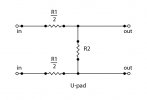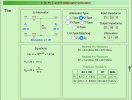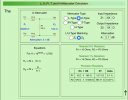Davide
Senior Member
Hi everyone.
Someone by chance tried to modify a Hypex NCxxxMP module bypassing the buffer according to the manual? (for those who do not know it details which resistors to remove and add).
I would like to try it by having an Ultralite Mk5 that delivers 8.7v.
However I have no experience in modifying SMD components so I wanted to know if anyone had tried their hand and could give me suggestions.
Thanks
Someone by chance tried to modify a Hypex NCxxxMP module bypassing the buffer according to the manual? (for those who do not know it details which resistors to remove and add).
I would like to try it by having an Ultralite Mk5 that delivers 8.7v.
However I have no experience in modifying SMD components so I wanted to know if anyone had tried their hand and could give me suggestions.
Thanks





